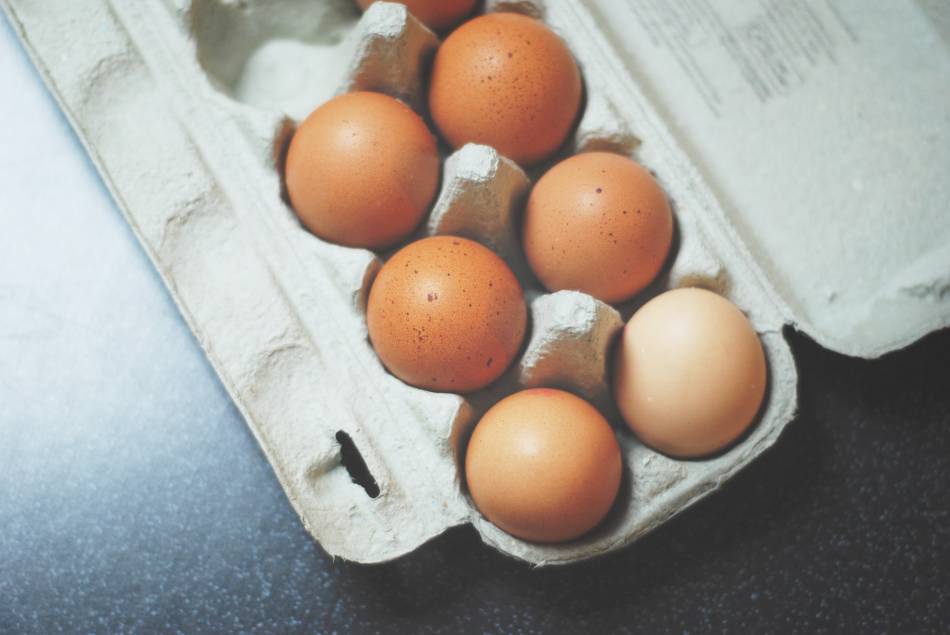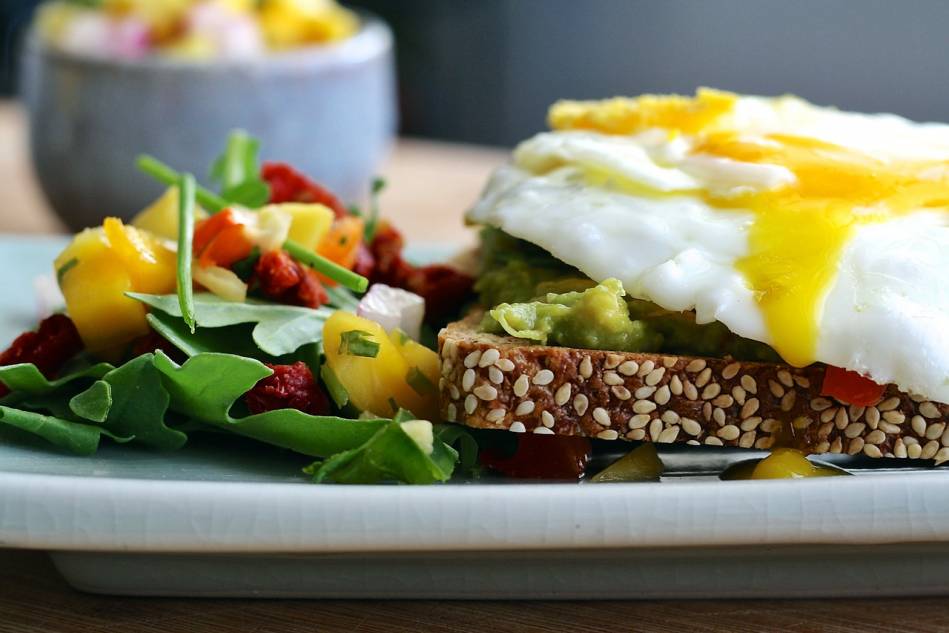
Why is a protein-rich diet effective when you want to lose weight?
Everyone needs protein, regardless of gender and age. In the body, the protein is broken down into amino acids and the amino acids are involved in many functions. From an athlete’s point of view, protein is important for regeneration, for building muscle, as it is made up of protein. But amino acids play an important role in immune function. Proteins are also enzymes that are involved in metabolic processes, and even some hormones are made up of proteins. Protein is also required for the transport of oxygen and carbon dioxide, and is also essential for maintaining an acid-base balance.
Consuming more protein is not only worthwhile if you want to increase muscle mass. If you want to lose weight, it is also advisable to rethink your diet and increase your protein content, as it helps you maintain muscle tissue in a low-calorie diet, thus keeping your energy intake high. By doing this, you are helping your body to lower your fat stores and not recover your missing energy from your muscles. If you do not have enough protein in your body, your body will not be able to preserve muscle tissue because it cannot rebuild, so it will rather get rid of it because the muscle is energy intensive. If you provide the protein you need with a high-protein diet, you can avoid it!

Functions of the protein in the body
Protein is one of the three macronutrients alongside carbohydrates and fats. It is a nutrient that your body needs to be provided every day.
| Minimum daily intake of protein: 0.8 g / kg. So for a 70 kg person, that means 56 g of protein. |
Protein builds your muscles and is found in bones, connective tissue, hair, skin. This protein content is constantly changing. Proteins are also part of the hormones, allowing different organs and cells to communicate with each other. Most enzymes are also made up of proteins that help thousands of chemical reactions in the body. Certain proteins also help to transport important molecules, such as hemoglobin, which attaches to oxygen to reach the organs in the bloodstream and participate in the proper processes.
Protein consists of smaller units, amino acids. Of the 22 amino acids that make up the protein, 9 are essential – that is, they cannot be produced by the body – so you need to bring them into your body through nutrients. If you consume animal protein, it will always contain the essential amino acids, so it’s called a complete protein source. However, most protein sources of plant origin are incomplete protein sources, so it is advisable to combine them to contain all 9 essential amino acids so that they can be utilized as protein by the body. The most popular animal protein sources among athletes are poultry, eggs, dairy products, shakes, while vegetable proteins are most common in soy, peas, legumes, and nuts.
Goals and Needs: Protein and other nutrients
Depending on your purpose, the three macronutrients mentioned above, carbohydrate, protein, and fat, will need different proportions. You should also take into account your age, gender, constitution, and daily activity when setting up your diet. Fortunately calculators are easily available to calculate your daily energy and nutrient requirements by providing a few data.
To put it bluntly, if you want to gain weight, it is advisable to increase the amount of carbohydrate in your diet so that you can use it to gain extra energy for growth and training. This can be up to 4-7 g / kg depending on many conditions. The amount of protein in this case does not need to be raised very much, about 1.5 g / kg of body weight for everyone. And fats can be higher in amounts than in a fiber diet. Generally, 30% of the total calorie intake is from fats, one third of which is saturated, one third is monounsaturated and one third is polyunsaturated.
| For muscle mass gaining diets, it is recommended to consume 1.5 g / kg protein and 4-7 g / kg for carbohydrates. We recommend 30% of total calories from fat. |
If the goal is weight loss or shredding, the amount of the nutrients should be reduced. The amount of carbohydrate should initially be reduced to about 3 g / kg, which should be further reduced over time. Protein levels should be increased to 2-2.5 g / kg, while fat intake should be reduced. Saturated fats are also important in many ways, but they can certainly be found in foods that you consume during a shredding diet. Therefore, you should focus on the appropriate unsaturated fatty acids to ensure that your intake is high.
Whatever our purpose, vitamins and minerals are important to remember, as they play an important role in all purposes, whether it is the proper functioning of the nervous system or digestion, or the optimal work of muscles or the function of the hormone system. Of course, fiber intake and fluid intake need to be taken into account, so the situation is not that simple. You need to know the nutrient content of each food in order to calculate exactly what food is needed to cover your daily needs. Foods, however, never contain a single nutrient – they typically contain more than one – and this must be taken into account. Even though you count a food as a source of carbohydrates, it can also be high in protein or fiber, for example.
How to Start a High Protein Diet
Although the amount of nutrient you need depends on your body type and your daily activity (no matter whether you are in office or physical work), let’s take a closer look at what this means in terms of nutrients and how they can be made.
It’s a good idea to start every long-term change in small steps. For example, change your breakfast sandwich by adding cold cuts, salad, cucumbers, tomatoes to a wholemeal bun, or maybe replacing it with egg or oatmeal with a protein shake.
| For each meal, try to increase your pure protein and carbohydrate intake during the first period. |
Most people do not pay attention to the intake of unsaturated fatty acids, and this is important, so be aware of what you can do with Omega-3 capsules, fish oil capsules, or by eating sea fish or possibly changing the salad dressing to linseed oil. You should also think about side dishes and all foods that contain fast-absorbing carbohydrates – like baked goods, pastries, cakes, biscuits. Because foods that contain complex carbohydrates are absorbed more slowly, your blood sugar levels will not rise sharply and then be lowered by insulin, causing a new sensation of hunger.
These foods contain the same amount of calories but keep you well-fed: Wholemeal bakery wares, pasta, oatmeal, buckwheat, chard, brown rice, vegetables. It is worth replacing the garnish with these. Cakes and sweets can also be made to fit into your diet. Nutritional supplements such as protein shakes or protein bars, which are high in protein but do not contain sugar and too much fat, can be a great help in this, so they can be added to your daily meals. Whatever your food sensitivities or allergies, diet meals can be solved, even for vegetarians. Increasing protein intake from plant protein is possible in the form of nutritional supplements, but also in cases of gluten sensitivity and lactose sensitivity.

High Protein Dietary Diet
Let’s look at what a diet diet can look like on weekdays. You can repeat a day at the weekend or have other meals. Quantities should be calculated according to your particular circumstances. At dinner, starchy carbohydrate sources can be removed.
Breakfast:
• Oatmeal protein mixed with shakes, linseed oil, water or skimmed milk
• Oatmeal baked with eggs
• Scrambled eggs with whole wheat buns, cucumbers or tomatoes
• Wholegrain buns with low fat, high protein poultry meats, lettuce, cucumber
• Protein Pancake
Snacks:
• Yogurt, low in fat, low in sugar
• Protein bar, sugar free (Zero Bar protein bar)
• Protein smoothie, sugar free (Iso Whey Zero protein powder)
• Fruit (berries, bananas, apples, etc.)
• Raw vegetables cut into snacks
Lunches and dinners:
• Brown rice with roasted chicken breast and pickles
• Pearl barley with grilled sea fish and salad
• Wholemeal tortilla, yogurt dressing and roasted turkey breast salad
• Dietary chicken stew with sweet potatoes and sugar-free pickles
• Tuna salad
Naturally, other dietary supplements can play a role in the diet depending on the purpose. If you need pre-workout energy, a sugar-free nitric oxide enhancer or creatine may be helpful. In the evening, you can even eat casein before going to bed, which provides the necessary amino acids throughout the night as it is a slow-absorbing protein source. You can also use weight control formulas such as thermogenic fat burners, L-carnitine or other active ingredient-containing products. Don’t forget about the vitamins and minerals we mentioned earlier. For the intake of unsaturated fatty acids, also mentioned above, you should consume Omega 3 fatty acids from the dietary supplement.
All in all, we have seen that it is important for the diet to have the right amount and proportion of nutrients.
| This ensures that the body does not starve, yet easily releases the fat stores and loses weight while maintaining muscle mass. |
In this regard, it is particularly important to pay attention to the amount of protein consumed. Thanks to its energy content and slower absorption, repeatedly consumed daily protein will keep you satiated for a longer period of time, while building and maintaining muscle will help keep our metabolism from slowing down. You can also make sweets in the form of smoothies. In addition to dieting, it is also worthwhile to move on to further increase your energy consumption , thereby accelerating weight loss, helping you maintain muscle and staying tight and toned!